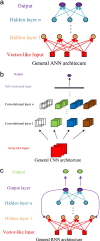Machine learning methods for assessing photosynthetic activity: environmental monitoring applications
- PMID: 36124273
- PMCID: PMC9481805
- DOI: 10.1007/s12551-022-00982-2
Machine learning methods for assessing photosynthetic activity: environmental monitoring applications
Abstract
Monitoring of the photosynthetic activity of natural and artificial biocenoses is of crucial importance. Photosynthesis is the basis for the existence of life on Earth, and a decrease in primary photosynthetic production due to anthropogenic influences can have catastrophic consequences. Currently, great efforts are being made to create technologies that allow continuous monitoring of the state of the photosynthetic apparatus of terrestrial plants and microalgae. There are several sources of information suitable for assessing photosynthetic activity, including gas exchange and optical (reflectance and fluorescence) measurements. The advent of inexpensive optical sensors makes it possible to collect data locally (manually or using autonomous sea and land stations) and globally (using aircraft and satellite imaging). In this review, we consider machine learning methods proposed for determining the functional parameters of photosynthesis based on local and remote optical measurements (hyperspectral imaging, solar-induced chlorophyll fluorescence, local chlorophyll fluorescence imaging, and various techniques of fast and delayed chlorophyll fluorescence induction). These include classical and novel (such as Partial Least Squares) regression methods, unsupervised cluster analysis techniques, various classification methods (support vector machine, random forest, etc.) and artificial neural networks (multilayer perceptron, long short-term memory, etc.). Special aspects of time-series analysis are considered. Applicability of particular information sources and mathematical methods for assessment of water quality and prediction of algal blooms, for estimation of primary productivity of biocenoses, stress tolerance of agricultural plants, etc. is discussed.
Keywords: Ecological monitoring; Machine learning; Photosynthesis; Phytoplankton; Primary productivity; Stress tolerance.
© International Union for Pure and Applied Biophysics (IUPAB) and Springer-Verlag GmbH Germany, part of Springer Nature 2022, Springer Nature or its licensor holds exclusive rights to this article under a publishing agreement with the author(s) or other rightsholder(s); author self-archiving of the accepted manuscript version of this article is solely governed by the terms of such publishing agreement and applicable law.
Conflict of interest statement
Competing interestsThe authors declare no competing interests.
Figures






References
-
- Aggarwal CC (2018) Neural networks and deep learning. a textbook. Springer Cham. XXIII. 10.1007/978-3-319-94463-0
-
- Aguirre M, Berruti B, Bezy J-L, Drinkwater M, Heliere F, Klein U, Mavrocordatos C, Silvestrin P, Greco B, Benveniste J. Sentinel-3 - the ocean and medium-resolution land mission for GMES operational services. ESA Bull. 2007;131:24–29.
-
- Aleksandrov V. Identification of nutrient deficiency in plants by artificial intelligence. Acta Physiol Plant. 2022;44:29. doi: 10.1007/s11738-022-03363-0. - DOI
-
- Antal T, Konyukhov I, Volgusheva A, Plyusnina T, Khruschev S, Kukarskikh G, Goryachev S, Rubin A. Chlorophyll fluorescence induction and relaxation system for the continuous monitoring of photosynthetic capacity in photobioreactors. Physiol Plant. 2019;165:476–486. doi: 10.1111/ppl.12693. - DOI - PubMed
Publication types
LinkOut - more resources
Full Text Sources

